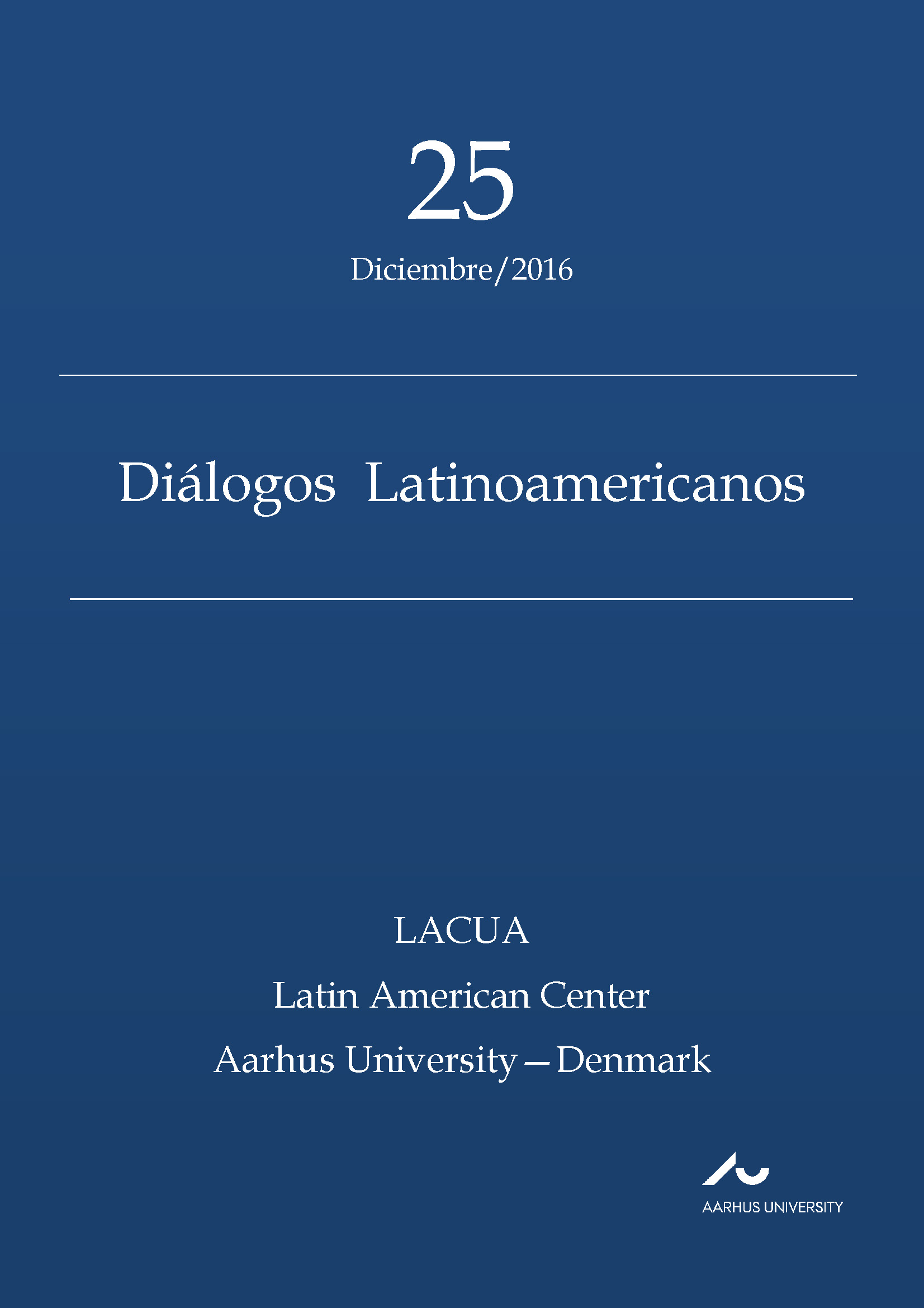Aproximación Interdisciplinaria a las Reminiscencias del Sistema de Castas Colonial en México
DOI:
https://doi.org/10.7146/dl.v17i25.112901Keywords:
Caste, Discrimination, History, Literature, indigenous, societyAbstract
To talk about the caste system seems like a reference to an analysis oriented
to History or Sociology; however, this appreciation could not be completely
true. Today, the structures of stratification in Mexico seem to have cleared
reminiscent of the colonial caste system; this is evident in the popular
imaginary, and the actions of the population. With this the approach to the
topic requires an interdisciplinary reflection to identify those reminiscences,
which through a process of restructuration have configured an elaborate
classist system. This paper addresses this approach through an
interdisciplinary effort that is based in three axes: historical, literary and
social, enabling a new understanding of the phenomena of discrimination in
today’s Mexican society.
References
moderno. El Universal.
Blumenbach, J. F. (1865). On the natural variety of mankind. En T.
Bendyshe, The anthropological treatises of Johann Friderich
Blumenbach (Tercera edición ed., págs. 145-176). Londres:
Anthropological Society of London.
Campillo y Cossio, J. (1743). Nuevo Sistema de Gobierno
Económico para la América. Madrid: Imprenta de Benito Cano.
Carballo, E. (1986), Protagonistas de la literatura mexicana. Ed. SEPLecturas
Mexicanas: México: 529.
Castellanos, R. (1989). Oficio de tinieblas. México: Joaquín Mortiz.
CONAPRED. (2010). Encuesta Nacional sobre Dsicriminación en México.
Recuperado el 9 de Mayo de 2013, de Consejo Nacional para Prevenir la
Discriminación:
http://www.conapred.org.mx/index.php?contenido=pagina&id=424
&id_opcion=436&op=436
De Sahagún, f. B. (1956). Historia de las cosas de la Nueva España
(Vol. Décimo). México: Porrúa.
Florescano, E. (1997). Etnia, estado y nación. México: Aguilar.
Florescano, E. (2010). Actores y escenarios de la independencia.
México: FCE
Fyfe, C. (1994). Using race as an instrument of policy: a historical view.
Race & Class , 69-77
León, N. (1924). Las castas del México colonial o Nueva España.
México: Talleres gráficos del museo nacional de arqueología,
historia y etnografía.
López Beltrán, C. (2008). Sangre y temperamento: pureza y mestizajes
en las sociedades de castas americanas. En F. Gorbach, & C. López
Beltrán, Saberes locales: ensayos sobre historia de la ciencia en
América (págs. 289-342). Zamora: El Colegio de Michoacán.
Netanyahu, B. (1999). The marranos of Spain: From the late 14th to
the early 16th Century. New York: Cornell University Press.
Perus, F. (2010). Rosario Castellanos: la búsqueda de una voz
literaria propia. Rosario Castellanos: perspectivas críticas.
México: Porrúa.
Rosenblat, A. (1954). La población indígena y el mestizaje en América (Vol.
II). Buenos Aires: Nova.
Shell, M. (1991). Marranos (Pigs), or from coexistence to toleration.
Critical Inquiry , 306-335
Sierra, J. (1905). Obras del doctor Justo Sierra Tomo III: La hija del
judío. México: Imprenta de V. Agueros.
Urías Horcasitas, B. (1996). Historia de una negación: la idea de
igualdad en el pensamiento político mexicano del siglo XIX.
México: UNAM.
Urías Horcasitas, B. (2007). Historias secretas del racismo en
México (1920-1950). México: Tiempo Dememoria Tusquets.
Viqueira, J. (1995), Chiapas: Los rumbos de otra historia, México,
Centro de Estudios Mayas, UNAM, Centro de Investigaciones y
Estudios Superiores en Antropología Social, Universidad de
Guadalajara: 219-236
Downloads
Published
How to Cite
Issue
Section
License
Counting from volume 31 (2022), articles published in Diálogos Latinoamericanos are licensed under CC-BY 4.0. Read more about the license terms here https://creativecommons.org/licenses/by/4.0/.
No Creative Commons license applied on volumes 1-30. All rights reserved by the authors. Readers may download, read, and link to the articles, but they cannot republish the articles.
With the publication of volume 31 (2022), authors retain the full copyright to their articles and give Diálogos Latinoamericanos the right to the first publication. Authors also retain copyright to earlier versions of manuscripts, such as the submitted (pre-print) and the accepted manuscript (post-print).
Copyright to articles published in volumes 1-30 is held by the authors.





